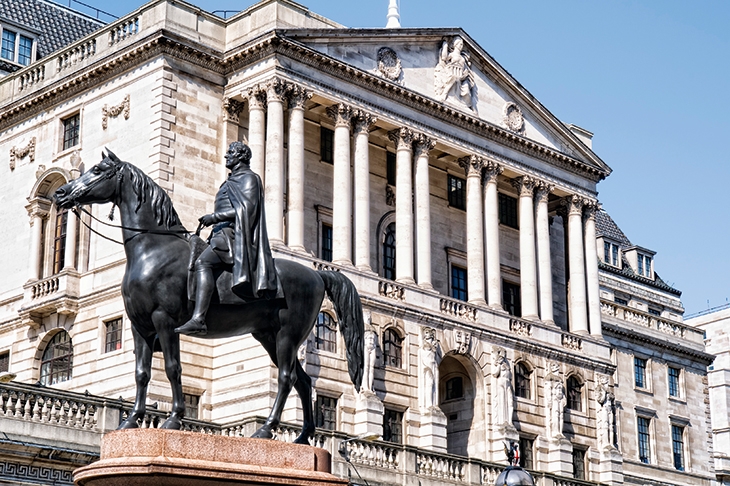‘Safe as the Bank of England.’ So goes the old phrase. And yes, with walls 8ft thick, the Old Lady is pretty impregnable. Even the keys to her vaults are more than a foot long (the locks also now incorporate voice-activated software). Until 1973 the building was guarded at night by soldiers from the Brigade of Guards, who received a pint of beer with their dinner there. With all this security, how can you hope to get in?
One answer came in 1836, when the directors received an anonymous letter inviting them to meet the letter writer in the bullion room late one night. At the agreed hour they heard some floorboards being dislodged, and looked down to see a man’s head appearing. He worked in the sewers, and had calculated that a drain ran directly underneath the vault. The Bank rewarded him £800 — worth around eighty grand today, but still not as much as he could have got by nicking all the gold. That’s the gold, by the way, that can only be stacked six pallets high — otherwise it would sink into the clay bedrock on which the Bank is built.
Best to assume this drain has been blocked, so what are your options? Every autumn there’s Open House, the weekend when famous London buildings welcome public visitors. I went during Mervyn King’s governorship. On his desk sat a cricket ball with which he’d taken five wickets for the Bank. (Sadly ‘Merv the Swerve’ was a spinner rather than a swing bowler.) Or you could visit the wonderful museum in the Bank’s south-east corner (open Monday to Friday, free entry). There are old white fivers, a real gold bar — you have to try and pick it up with one hand — and a signed first edition of The Wind in the Willows, whose author Kenneth Grahame worked at the Bank for 30 years.
But this is tourist stuff. What about the working part of the Bank — how can you get in there? Someone once told me you’re allowed in to exchange damaged banknotes. So when my dog chewed a tenner, off I went, presenting myself at the main entrance on Threadneedle Street. ‘Very sorry, sir,’ said the doorman. ‘You do that by post these days.’ The form was interesting. ‘How did the damage occur?’ ‘Eaten by dog.’ ‘Where is the missing portion of the note?’ ‘Inside dog.’ Even though by then it probably wasn’t.
Then I heard that though damaged notes are dealt with by post, old notes (in other words ones that are no longer legal tender) are replaced on the premises. Clearing out my partner’s father’s house after he died, we found a fiver from the 1980s. Again I made the trip, bracing myself for more disappointment.
This time the bastion fell. ‘Certainly, sir. Just through there.’ Quick bag search inside the front door, make a right and you’re into a room that looks just like a normal bank (Perspex screens and all), albeit with impressive paintings of previous Governors on the walls. Indeed until last year Bank employees could use this room as a normal bank: their accounts bore the cherished sortcode 10-00-00. One of the three tellers examined my fiver (available on eBay for not much more than face value, should you wish to enjoy the experience yourself), then issued me with a replacement. Safe.






Comments